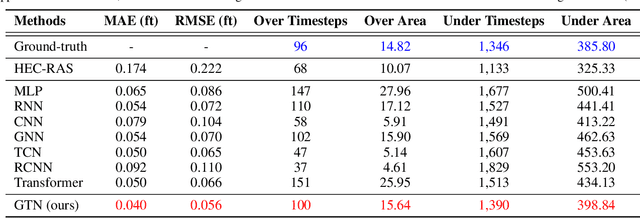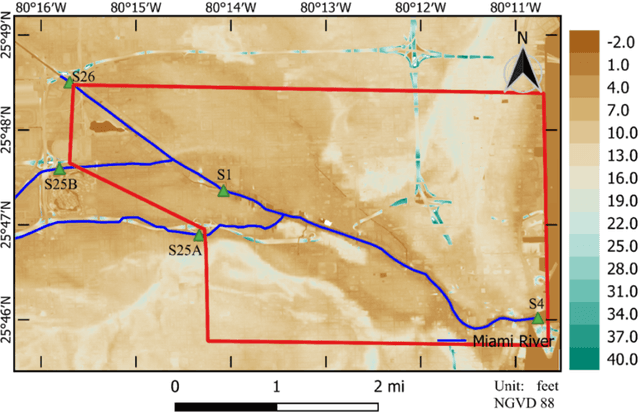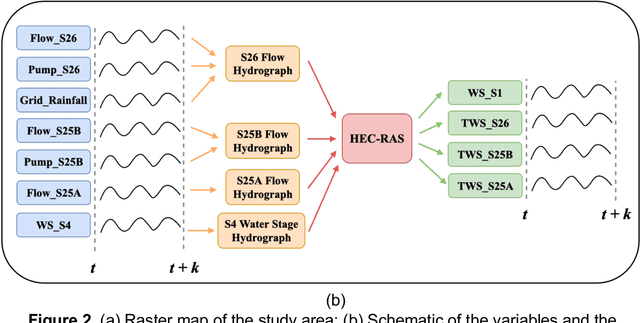Zeda Yin
FIDLAR: Forecast-Informed Deep Learning Architecture for Flood Mitigation
Feb 20, 2024



Abstract:In coastal river systems, frequent floods, often occurring during major storms or king tides, pose a severe threat to lives and property. However, these floods can be mitigated or even prevented by strategically releasing water before extreme weather events with hydraulic structures such as dams, gates, pumps, and reservoirs. A standard approach used by local water management agencies is the "rule-based" method, which specifies predetermined pre-releases of water based on historical and time-tested human experience, but which tends to result in excess or inadequate water release. The model predictive control (MPC), a physics-based model for prediction, is an alternative approach, albeit involving computationally intensive calculations. In this paper, we propose a Forecast Informed Deep Learning Architecture, FIDLAR, to achieve rapid and optimal flood management with precise water pre-releases. FIDLAR seamlessly integrates two neural network modules: one called the Flood Manager, which is responsible for generating water pre-release schedules, and another called the Flood Evaluator, which assesses these generated schedules. The Evaluator module is pre-trained separately, and its gradient-based feedback is used to train the Manager model, ensuring optimal water pre-releases. We have conducted experiments using FIDLAR with data from a flood-prone coastal area in South Florida, particularly susceptible to frequent storms. Results show that FIDLAR is several orders of magnitude faster than currently used physics-based approaches while outperforming baseline methods with improved water pre-release schedules. Our code is at https://github.com/JimengShi/FIDLAR/.
Deep Learning Models for Water Stage Predictions in South Florida
Jun 28, 2023



Abstract:Simulating and predicting water levels in river systems is essential for flood warnings, hydraulic operations, and flood mitigations. In the engineering field, tools such as HEC-RAS, MIKE, and SWMM are used to build detailed physics-based hydrological and hydraulic computational models to simulate the entire watershed, thereby predicting the water stage at any point in the system. However, these physics-based models are computationally intensive, especially for large watersheds and for longer simulations. To overcome this problem, we train several deep learning (DL) models for use as surrogate models to rapidly predict the water stage. The downstream stage of the Miami River in South Florida is chosen as a case study for this paper. The dataset is from January 1, 2010, to December 31, 2020, downloaded from the DBHYDRO database of the South Florida Water Management District (SFWMD). Extensive experiments show that the performance of the DL models is comparable to that of the physics-based models, even during extreme precipitation conditions (i.e., tropical storms). Furthermore, we study the decline in prediction accuracy of the DL models with an increase in prediction lengths. In order to predict the water stage in the future, our DL models use measured variables of the river system from the recent past as well as covariates that can be reliably predicted in the near future. In summary, the deep learning models achieve comparable or better error rates with at least 1000x speedup in comparison to the physics-based models.
 Add to Chrome
Add to Chrome Add to Firefox
Add to Firefox Add to Edge
Add to Edge